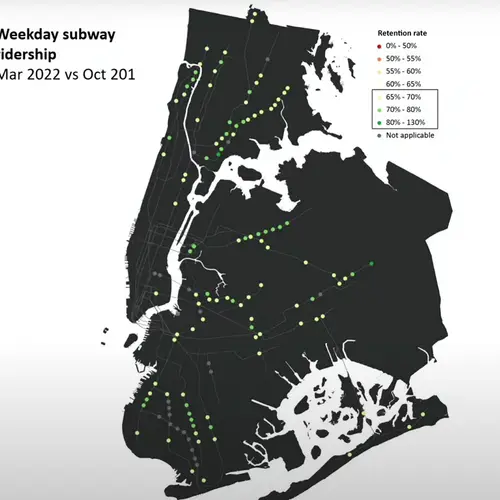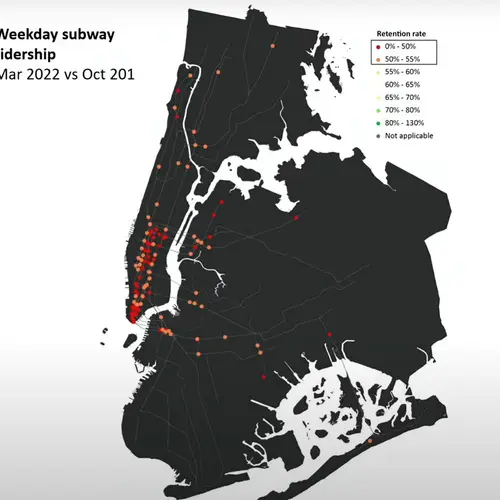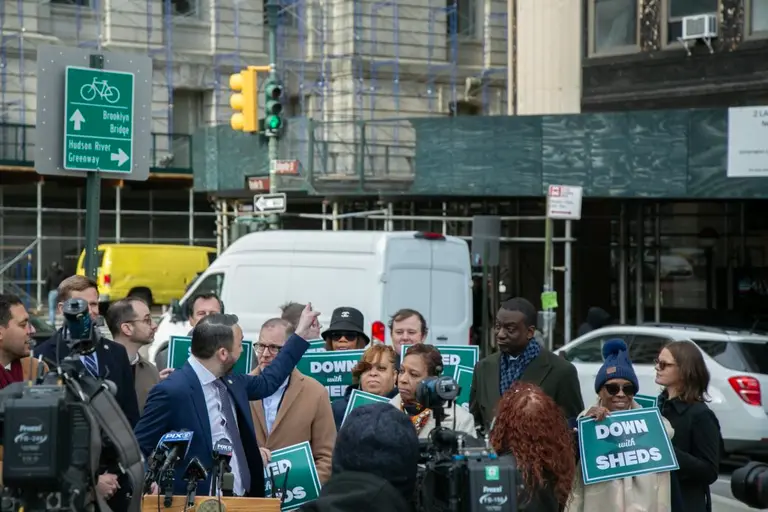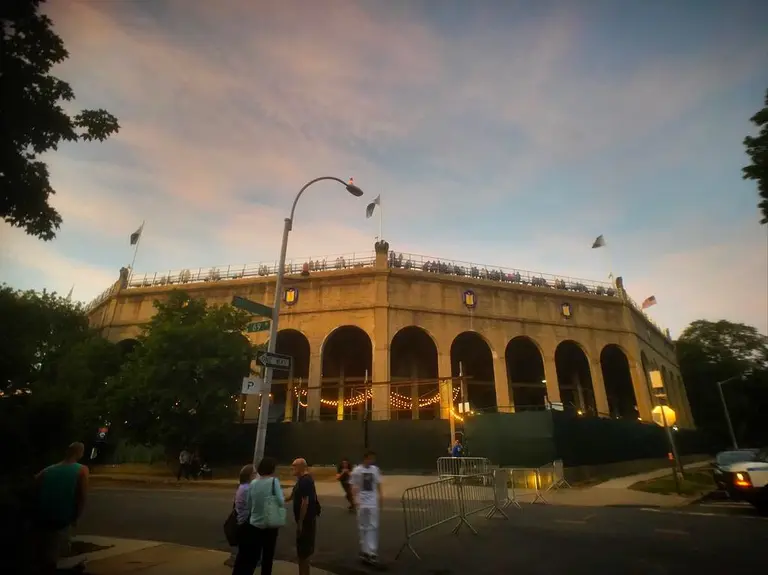Subway ridership almost at 90% of pre-pandemic levels in NYC’s working-class neighborhoods
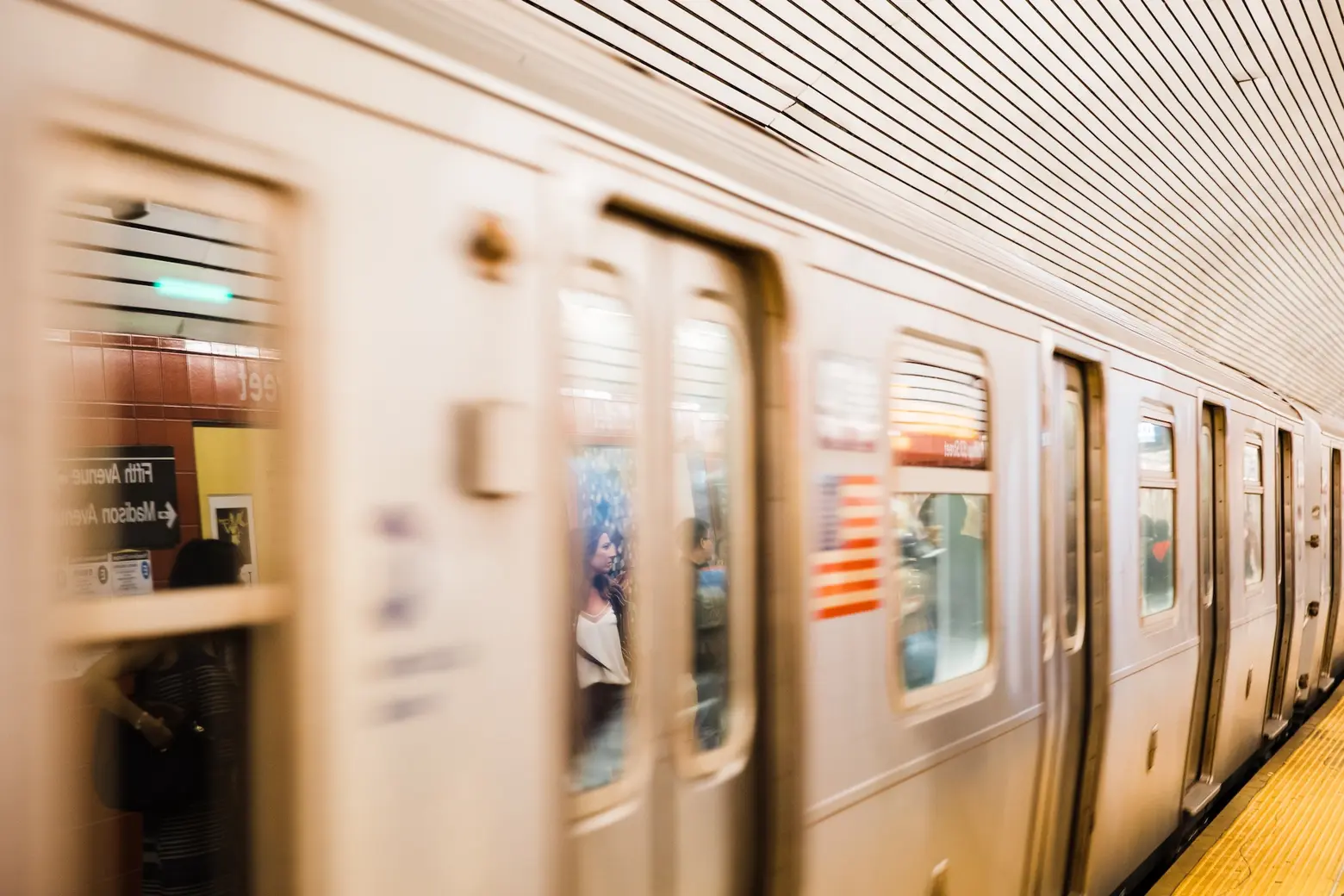
Subway ridership has nearly returned to pre-pandemic levels in New York City’s working-class neighborhoods. During the Metropolitan Transportation Authority’s monthly board meeting on Wednesday, MTA Chair and CEO Janno Lieber said in most working-class neighborhoods throughout the five boroughs, subway ridership has climbed back up to 70, 80, and for some, 90 percent of pre-pandemic ridership levels. But in the city’s major business districts, subway ridership remains way below pre-Covid-19 levels.
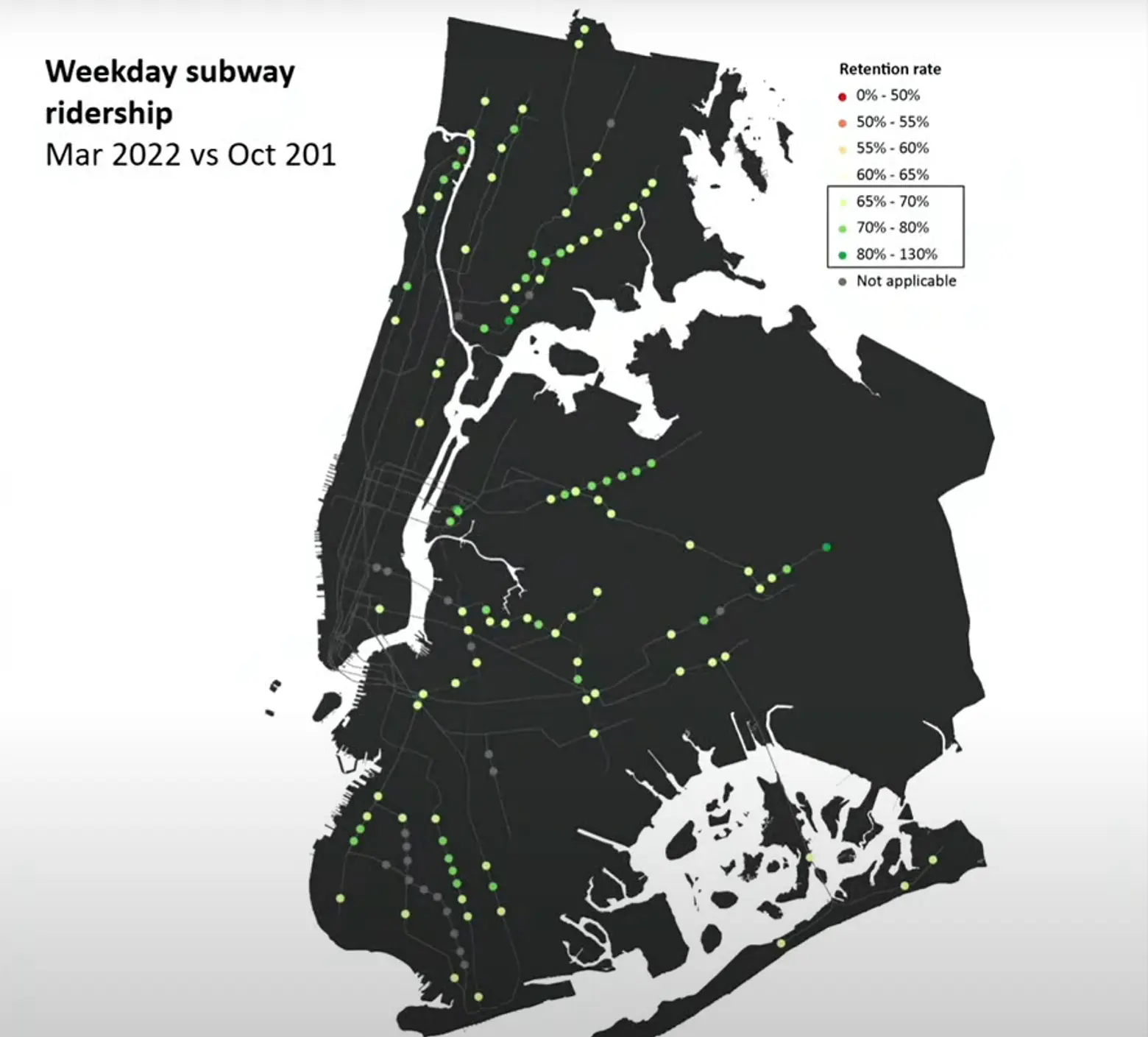 Image courtesy of the Metropolitan Transportation Authority (MTA)
Image courtesy of the Metropolitan Transportation Authority (MTA)
During the agency’s meeting, Lieber presented two maps displaying the subway system’s current ridership levels in working-class neighborhoods throughout the five boroughs and within the city’s central business districts. Using green dots to illustrate ridership of at least 65 percent of 2019 levels, the map indicated working-class neighborhoods have almost fully recovered.
Ridership levels along the 2, 5, and 6 lines in the Bronx have displayed high levels of ridership, as well as the J, Z, A, and C trains in Ozone Park and Woodside, the 7 train in Elmhurst and Jackson Heights, the N, R, F, B, and Q lines in southern Brooklyn, and the A and L lines in central Brooklyn.
Lieber attributed these findings to the fact that commuters hailing from these areas are dependent on the subway system to work, emphasizing the importance of the subway system for NYC’s working class.
“Our ability to provide full service is a fundamental equity issue. We can’t let them down,” Lieber said during the meeting.
Lieber continued: “There are many communities, some with long commutes far from the central business district, who have remained at 70 or 80 percent, sometimes at even 90 percent of ridership levels pre-Covid. They also happen to be the less affluent areas of the city.”
Using red dots to indicate ridership levels at or below 55 percent, the other map indicated that subway ridership in the city’s central business districts, including Midtown, parts of Lower Manhattan, Long Island City, and Downtown Brooklyn, is still lacking. Lieber attributes this statistic to the fact that many of the commuters who once traveled to and from these areas have the ability to work from home; tourism has also not yet returned to pre-pandemic levels.
According to a survey released this month by the Partnership or New York City, just 38 percent of Manhattan office workers are in the workplace on an average weekday, as of late April 2022. The group project that the number will climb to 49 percent of workers in the office on an average weekday by September.
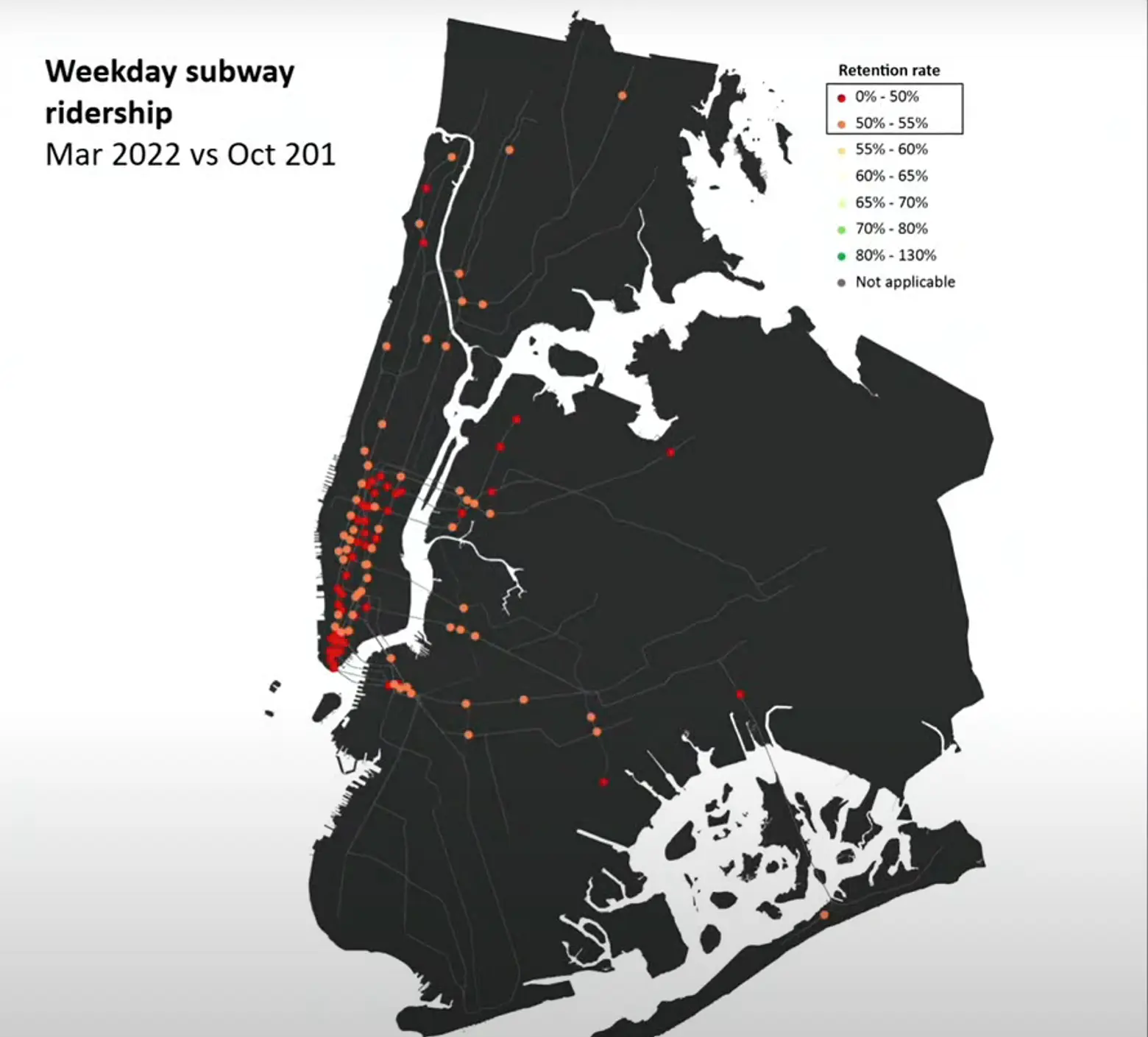
Image courtesy of the Metropolitan Transportation Authority (MTA)
The MTA is optimistic that ridership levels will soon return to what they once were as more workers return to offices and the city’s tourism recovers.
On Thursday, May 19, Gov. Kathy Hochul announced that subway ridership levels hit their highest point since the start of Covid-19, with 3,601,554 riders. However, this number still pales compared to the average weekly rider levels on Thursdays in 2019, which were 5.5 million.
RELATED:
